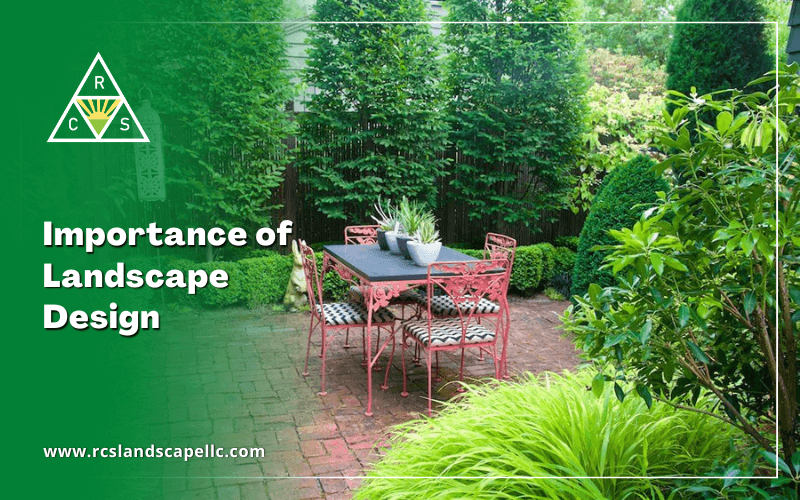Landscape Design - The Facts
Table of ContentsThe Only Guide to Landscape DesignThe Ultimate Guide To Landscape DesignThings about Landscape DesignNot known Facts About Landscape Design
When creating a domestic landscape, one of the most crucial action is to place an intend on paper. Creating a master strategy will certainly conserve you money and time and is most likely to cause an effective style. A master strategy is created through the 'layout procedure': a step-by-step method that considers the ecological problems, your wishes, and the components and concepts of layout.The 5 steps of the layout process consist of: 1) performing a site stock and analysis, 2) establishing your requirements, 3) creating useful representations, 4) creating theoretical layout plans, and 5) drawing a final style strategy. The first three steps develop the aesthetic, practical, and gardening requirements for the style. The last 2 actions after that apply those needs to the development of the final landscape plan.
This is a vital action for both plant option and positioning and finding family members tasks and functions. It is very important because the same environment problems that affect the plantstemperature, moisture, rain, wind, and sunlightalso impact you, the customer. The next action is to make a listing of your needs and desiresthis aids you establish how your backyard and landscape will be made use of.
The practical representation is after that used to locate the activity spaces on the site and from this representation a conceptual plan is developed. The last action is a last style that includes all the hardscape and growing information that are essential for installation. Throughout the layout procedure there are ten important points to consider: for plant selection and activity location by considering what you desire and require to help establish shapes and organize areas by assigning task locations and linking with elements for both the atmosphere and the customer by utilizing massing and layering strategies such as change locations and focal points in the products, the shades, and the surface appearances for the development and maintenance of plants by utilizing sustainable design practices A thorough supply and evaluation of the site is essential to figure out the environmental conditions for plant growth and the most effective use of the website.
Little Known Facts About Landscape Design.
The kind of dirt identifies the nutrients and wetness readily available to the plants. It is always best to use plants that will certainly thrive in the existing soil. Although dirt can be amended, change is commonly pricey and many times inadequate. Existing plant life can give ideas to the dirt type. Where plants grow well, note the soil conditions and use plants with similar growing requirements.

Sun/shade patterns, the quantity and length of exposure to sun or color (Number 1), develop microclimates (sometimes called microhabitats) - Landscape Design. Recording website problems and existing vegetation on a base map will reveal the place of microclimates in the yard. Plants typically fall under a couple of of four microclimate categories-full sun, partial color, color, and deep shade
Some Ideas on Landscape Design You Should Know
Number 1. Sunlight and shade patterns. Credit Rating: Gail Hansen, UF/IFAS It is necessary to note all the present conditions on an exact base map when navigate to this website doing the website stock (Figure 2). Utilities such as high-voltage line, septic storage tanks, underground utilities and roof covering overhangs identify plant location. Use a land surveyor's plat of your building for the boundaries and location of your home.


Spending plan concerns include the materials, preliminary installation prices and the on-going upkeep costs. Identify the moment and cash you want to put right into keeping the plants and hardscape-be realistic regarding your intentions and capability. Figure 3. Present usage areas. Credit Scores: Gail Hansen, UF/IFAS Number 4. Proposed use areas. Credit Scores: Gail Hansen, UF/IFAS There are various landscape design styles- from straightforward to complex, but it is valuable to select one to assist your plant and product selection.
Many individuals locate it valuable to look in gardening publications and publications for concepts. This is a great begin, yet realize that the yards in the images were picked because they are outstanding instances. Look at the photos with an essential eye to collect ideas that you can adapt to your interest degree, your budget and your site.
Determine if you intend to open your yard, shut your backyard, or a little of both, to these views (Landscape Design). Simply put, do you desire the yard to confine the area click to read more around you and relate mostly to your home, or do you desire the yard to open views and look outside, associating with the surroundings? This will certainly give you a starting factor to consider a style
Some Known Details About Landscape Design
This is called "local color", which suggests it fits with the surroundings. There are both form themes and style motifs. Every yard needs to have a kind theme, yet not all gardens have a design theme. Actually, lots of residential yards have no specific design other than to mix with your home by duplicating details from the design such as materials, color, and form.
In a type style the company and shape of the areas in the backyard is based either on the form of your house, the shape of the locations in between your house and the residential or commercial property boundaries, or a favorite shape of the home owner. The form theme figures out the form and organization (the design) of the spaces and the web links between them.
